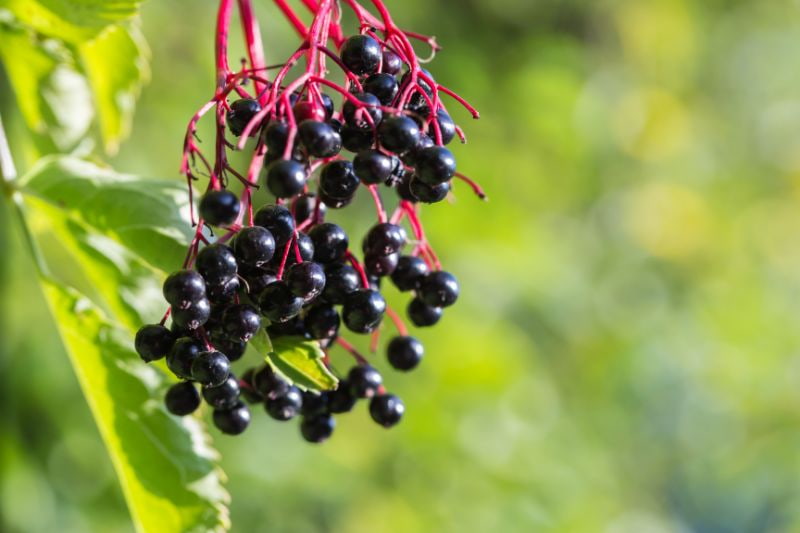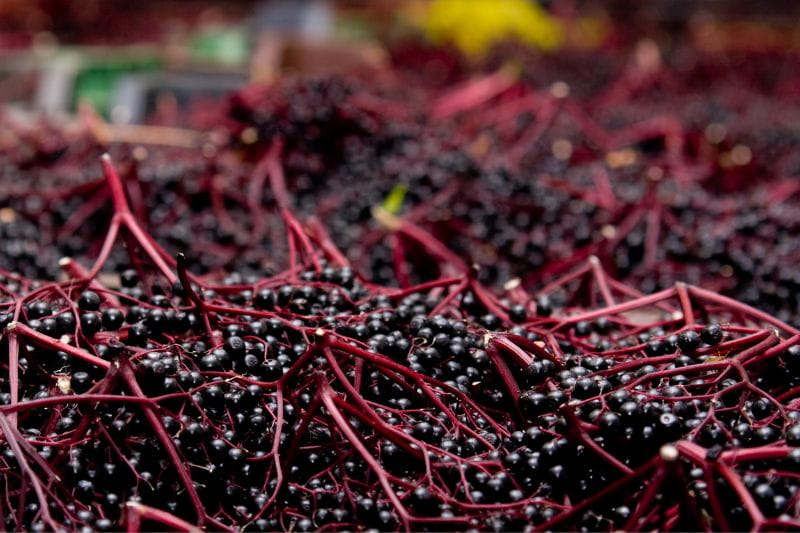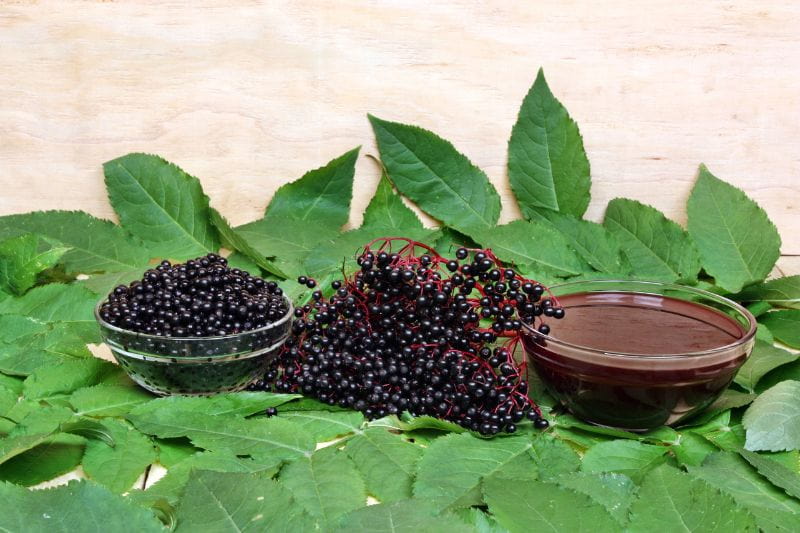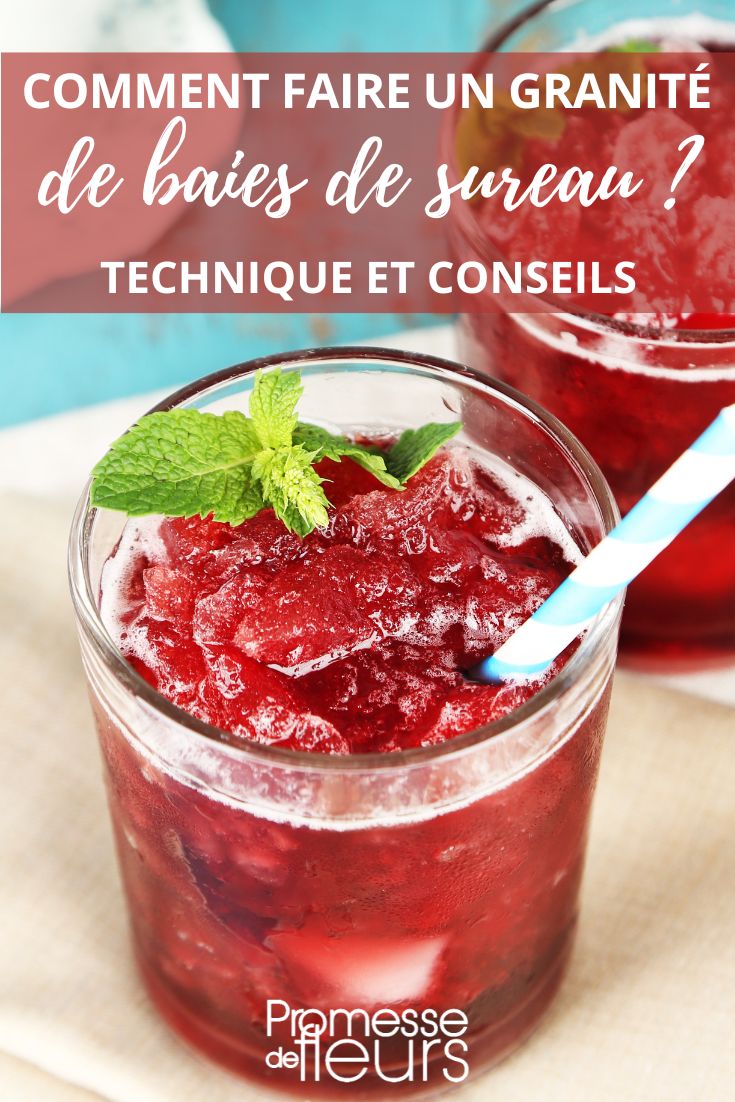When sun is at zenith, nothing beats a drink or dessert that really refreshes. And it's even better if these desserts and drinks are natural, light, low in calories... and easy to prepare in a few minutes. Elder granita (elder) meets all these criteria: it is refreshing, simple to prepare, and fat-free.
Here is a recipe for an excellent elderberry granita, both sweet and tangy.
To learn more : Elder: planting, growing, pruning

Harvesting elderberries: when and how?
Black elder (Sambucus nigra) is a common bush in France, widespread across the country. Over the years, new, more ornamental species have been developed, ideal for adding to flowering and fruiting hedges. Insects and birds certainly notice them. Foraging and pollinating insects take full advantage of the very melliferous and nectariferous corymbs, and birds swoop unabashedly on the pendulous clusters of black or red berries.
If elderflowers are used to make fritters, lemonade, sorbet or liqueurs, let's focus on the berries that will form the base of our granita. The flavour of these elderberries, sweet and tart, is quite similar to that of blueberries or blackberries.
Elderberries reach ripeness between late August and mid-September. Although it can extend until the end of September, the harvesting period is short, so hurry, birds won't leave any for long!
Be sure to choose clusters with fully black berries, a sign they are ripe. If there are a few green fruits, take care to remove them when destemming.

How to recognise good elderberries?
Theoretically, all varieties of Sambucus nigra have edible berries. Including varieties with pink umbels (Sambucus nigra ‘Straight Laced’ or Sambucus nigra ‘Black Tower’) or cream-coloured, and those with red (Sambucus racemosa), purple, white or blue berries.
So, if you prefer not to pick berries in the wild, plant a black elder variety that fruits quickly. Among the different varieties, you can choose:
- Sambucus nigra ‘Korsor’ with large fruits tasting strongly of wild blackberries and blueberries
- Sambucus nigra ‘Haschberg’ is very productive. Its dark violet berries have a flavour of plum and redcurrant
In the wild, it is essential to distinguish black elder from dwarf elder (Sambucus ebulus), the only truly toxic elder species. They are quite different and easy to tell apart: dwarf elder is an herbaceous plant, reaching 1.50 m at most, with deciduous foliage that disappears in winter. Black elder is a tree or a bush that retains its wood in winter.
Dwarf elder flowers in late June to early July, whereas black elder flowers in May or June.
Finally, the berry clusters have different habit: those of dwarf elder are erect towards the sky, those of black elder are pendulous towards the ground.

Preparing the elderberry syrup
Allow 500 g elderberries for 10 cl of water
- Shake elderberry clusters to dislodge small insects that might be hiding
- Wash clusters and remove berries from stalks, setting aside those that are not sufficiently black
- Put berries in a saucepan with the water
- Heat to boiling then lower heat
- Let simmer for 15 to 30 minutes to reduce the juice by half
- Drain the berries through a sieve over a large bowl to obtain a thick juice. You can crush the berries with a spoon
- Weigh the juice obtained and add the same weight of honey or brown sugar
- Mix well and squeeze in half a lemon
Your juice is ready. It's the base for your granita.

Preparing elderberry granita
Traditional granita is made with lemon juice. We'll follow the same recipe, replacing lemon juice with elderberry juice (about 200 g). Sugar quantity can be adjusted to taste.
- Put 400 g mineral water and 200 g caster sugar in a saucepan
- Bring to the boil to dissolve the sugar
- Add the elderberry juice and let cool slightly
- Pour into a metal dish to speed cooling
- Cover with a lid and place in the freezer
- Every hour, scrape with a fork to encourage crystal formation
When elderberry granita is ready, serve immediately in pretty glasses or verrines, garnished with a few mint leaves and fresh blueberries. Basil leaves also pair well with this granita.
To add a little kick, feel free to add spices when incorporating the elderberry juice. For example, ginger, cinnamon or cardamom.
































Comments